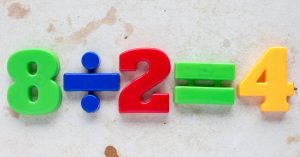How to Say How Much in Spanish

If you are a beginner in the Spanish language, one of the most important steps that you have to take is learning the appropriate pronunciation of the Spanish words, numbers, and alphabets. You may not find any difficulty when learning about Spanish letters since there are no huge differences between English and Spanish.
You will find some Spanish letters have similar sounds, while the letters are different. Instead of pronounced as it is written, the letter j is pronounced h. you may easily find this with Spanish names such as Javier, Juan, Jose, Jorge, and more. Some people may think that learning Spanish numbers is easier than the letters. Many people can count 1 to 10 in Spanish.
Uno : one
Dos : two
Tres : three
Cuatro : four
Cinco : five
Seis : six
Siete : seven
Ocho : eight
Nueve : nine
Diez : ten
Once you can memorize and pronounce the numbers, you can move to more complex numbers. In terms of phonetics, Spanish is more consistent than English. It means that the words in Spanish are nearly the same as they are spelled. Spanish phonetic consistency will help you pronounce multi-syllable and more complex Spanish words.
So, how to say how much in Spanish then? Well, in general, you can say “¿Cuanto cuesta?” For more specific phrases like “how much does it cost?” you can use “¿Cuanto vale?” However, Spanish in Spain and Mexico is a little bit different like you can say “¿cuanto te debo?” in an informal setting is acceptable in Mexico. There are more ways than one to say the same thing, and if you want to be a pro at Spanish, check this review.
Cuanto, cuantos, cuanta, and cuantas are commonly used when you want to know how much or how many of something. These question words (interrogative) are used for measuring or counting something. So, why are there four different forms of this phrase? In fact, that’s all depend on the word that comes after it and whether it’s plural or singular. Knowing whether the word is feminine or masculine is also important to determine the appropriate word. Pay attention to these schemes below:
¿Cuánto?
Cuanto is generally followed by a singular masculine noun. It can also be followed by uncountable nouns as well. For example:
¿Cuánto vale? (How much is it?)
¿Cuánto cuesta la bicicleta? (How much does the bike cost?)
¿Cuánto pesas? (how much do you weigh?)
¿Cuánto dinero tienes? (how much money do you have?)
¿Cuántos?
Cuántos is typically followed by a plural masculine forms. Literally, it means how many. For example:
¿Cuántos años tiene? ( how old are you?)
¿Cuántos hijos tienes? ( how many children do you have)
¿Cuánta?
Cuánta is typically followed by a singular feminine noun. The phrase means how much in English. For example:
¿Cuánta nieve hay? (how much snow is there?)
¿Cuánta harina necesitas? (how much flour do you need?)
¿Cuánta leche quieres? (how much milk do you want?)
¿Cuántas?
Cuántas is typically followed by a plural feminine noun. The phrase means how many in English. For example:
¿Cuántas personas ves? (how many people do you see?)
¿Cuántas familias hay? (how many families are there?)
You have to be careful with some irregular nouns that end with –O as they are not always masculine. On the other hand, end in –A is not always feminine. For example:
¿Cuántos dias hay en Octobre? ( how many days are there in October?)
¿Cuántas manos? ( how many hands?)
Occasionally, Cuanto also can appear with a preposition. For example:
¿a cuanto estan las peras? (how much are the pears?)
¿ por cuanto me vendes tu ropa? ( how much will you sell your hat for?)








